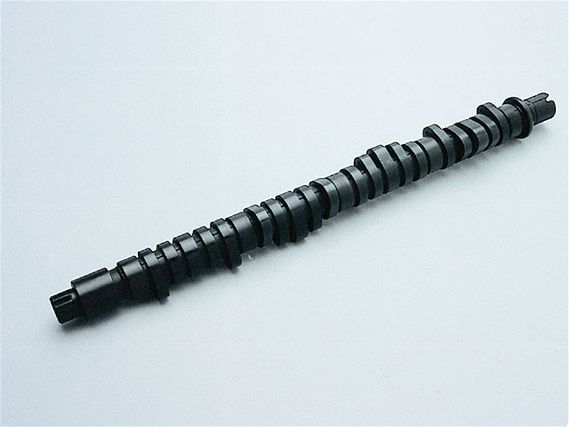 | Installing the Correct Camshafts - Cam You Dig It?
| Installing the Correct Camshafts - Cam You Dig It? If you are reading this article, it's probably safe to assume your appreciation of performance is somewhat advanced. And by being enlightened, it is also safe to say you probably already have the basic bolt-on performance modifications on your vehicle.
Most enthusiasts start with the basics, which usually include a cold-air intake system, high-flow cat-back exhaust and mandrel-bent tubular header. These simple bolt-on upgrades can easily increase the power output 10 to 20 hp. For most performance enthusiasts, the increased horsepower from the basic bolt-ons leads to a craving for more power.
The next logical rung on the evolutionary horsepower ladder is installing a performance camshaft to further enhance the volumetric efficiency of your engine.
The Search For The Right CamOne of the biggest mistakes when purchasing a camshaft(s) is going for the biggest, baddest mother of all camshafts for your engine. Although the rumpity, thumpity might sound cool and scare off any potential racers, it might not be adding any horsepower to your engine.
One of the worst things you can do to your engine is install the wrong performance camshafts; by doing so you can lose power, and without dyno testing you may never know it.
Let's get down to the basics. What is the purpose of a camshaft? The sole purpose of a camshaft is to open and close the valves via a lifter or rocker. On the intake side, the camshaft opens the valves to allow the charge air into the combustion chamber where it's compressed and ignited. Once the power from the explosion of gases is utilized, the exhaust valves are opened to evacuate the spent air/fuel mixture from the combustion chamber.
An engine's performance is directly related to how much charge air can be packed into the combustion chamber. By changing how far the valves are opened (valve lift) and for how long (cam duration), the engine is able to consume more charge air and, in turn, make more power because it has the capacity to burn more fuel.
Valve Lift, Duration And OverlapMany aftermarket cam manufacturers usually rate camshafts by valve lift and duration. The higher the valve lift and cam duration, the more aggressive the camshaft is. As stated earlier, valve lift is how far the valve is pushed into the combustion chamber. It's usually measured in thousands of an inch (e.g. 0.400 lift).
Cam duration is the amount of time (measured in degrees of crank rotation) from the time the valve is opened until it's closed.
It might be a surprise to many, but during an entire four-cycle rotation of a four-stroke engine, the intake valve and exhaust valve are sometimes opened at the same time. This occurrence is called overlap. Depending on whether the engine is reaching Top Dead Center (TDC) or Bottom Dead Center (BDC) as the exhaust valve is about to be closed, the intake valve is already slightly opened or vice versa. By opening the intake valve as the exhaust is about to close, the incoming charge air can help force the spent exhaust gases out of the chamber.
Too much valve overlap can also hinder the engine's performance. If the intake and exhaust valves are opened at the same time for too long, some of the precious charge air can escape, causing less charge air to be packed into the combustion chamber.
Overlap is directly affected by valve lift and cam duration. The higher the lift and the longer the duration, the more overlap a camshaft(s) is going to have.
Note: As a general rule, you don't want to run too much overlap on a force induction application. Since the charge air is pressurized, opening the intake and exhaust valves at the same time will result in boost pressure escaping from the combustion chamber.
When choosing a performance camshaft your first question should be, "What is the general use of the vehicle?" Is the vehicle your daily driver, street/strip or strictly strip?
Generally, a full race cam would probably not work to well for the street; its powerband is probably high in the rpm range and not at the lower engine speeds needed for around-town driving. An engine with really high compression would probably not work with a low-lift, short-duration cam because the engine would be starved for air.
More power can be made with the higher lift and duration cam. Contemplating changing camshafts? Check out the basics we've thought of for you before you add to your performance package.
Before You Buy Answer These Questions1.What type of driving are you planning on doing most? (street, street/strip, strip only)
2. Where is your engine's powerband, and where will the cams produce their best power gains?
3. Will the idle still be smooth or will it lope?
4. Is low-rpm performance important to you or top-end power?
5. Will the camshaft(s) still pass local emissions law testing?
6. Will the camshaft work with your forced-induction system?
7. Do I need to upgrade the springs and retainers?
8. Will it work with your current combination? (high compression, low compression, etc.)
9. Will it work with your automatic transmission?
10. Do I need to install adjustable cam gears or do they work with the stock gears?
